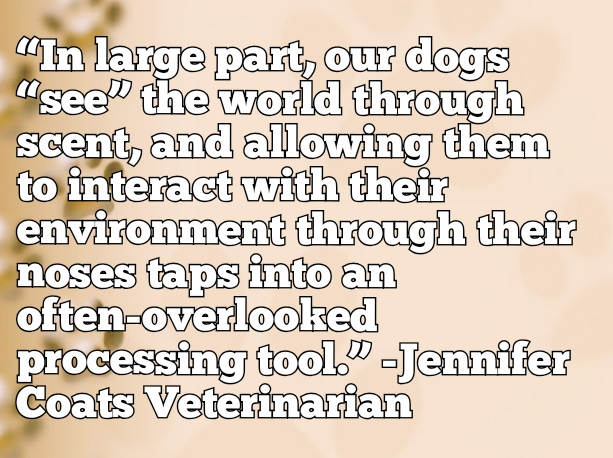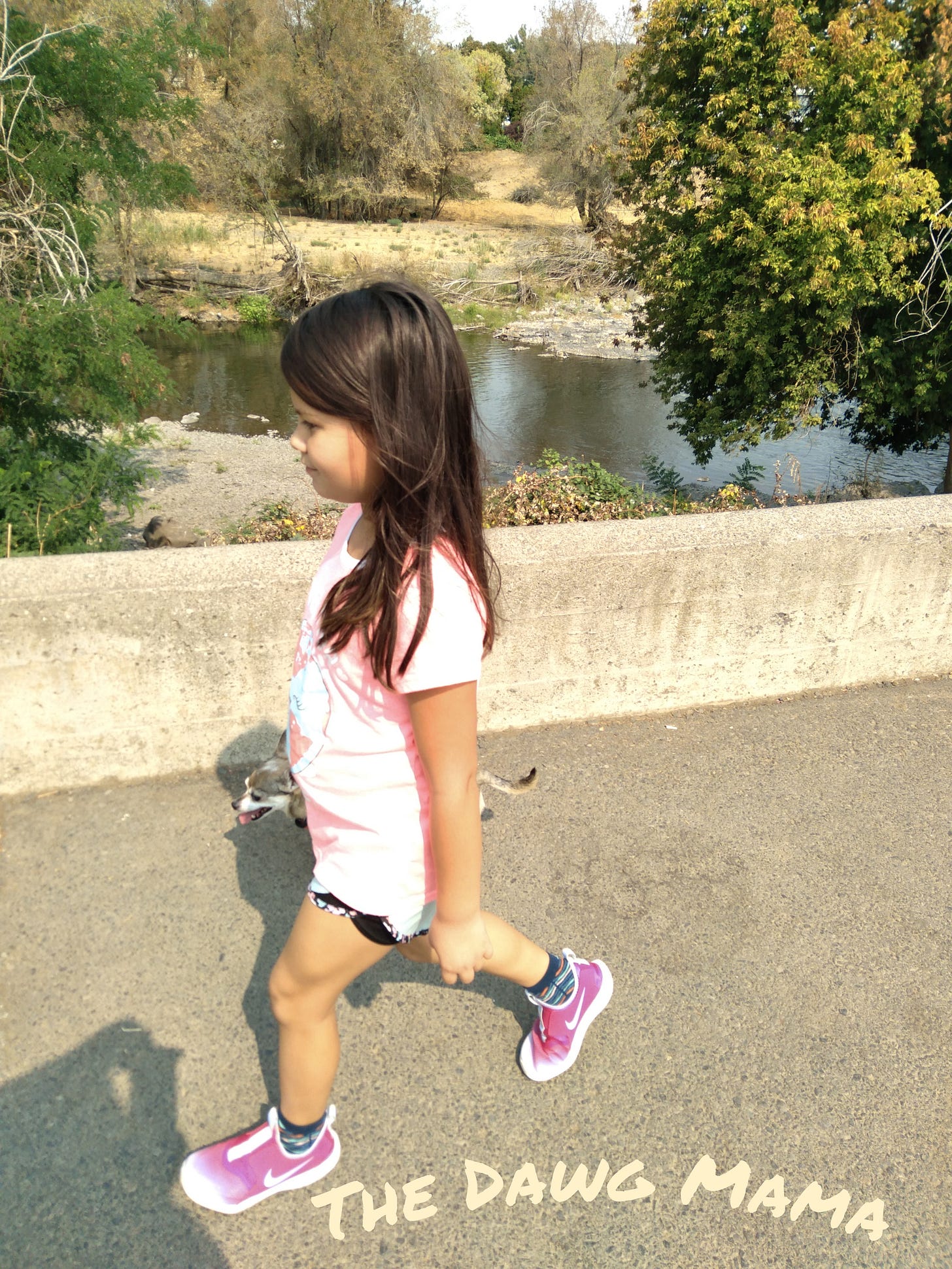
“There are no two hours alike. Every hour is unique and the only one given at the moment, exclusive and endlessly precious.” -Rabbi Abraham Heschel
Every dog walk is an opportunity to physically embrace the coupling of time and space. By narrowing your focus to just the walk, the silent communication shared between you and your dog becomes a mechanism for increased bonding. Each step together becomes a mini-sanctuary of time.
Think back to walks you’ve had with your dog where everything just flowed. In that moment life was all about the time and space you and your dog moved through. Your walking pace was comfortable, your dog was calm, and you felt a sense of ease and connection with your canine and the world.
Now think of walks where the flow was hard to come by. Maybe it was raining or your phone wouldn't stop buzzing. Perhaps both you and your dog were distracted and other dogs and people seemed like annoying uninvited guests along the path.
Here are some of my suggestions for a more fulfilling walk for both you and your dog:
Use your walk with your canine as a break from digital distractions. Leave the phone at home or put it on silent. Focus instead on your breath, your dog’s movement, and the subtle shifts in temperature or scenery.
Make safety a priority by being calmly aware of your surroundings. Challenges on walks include: traffic, impertinent strangers, poorly behaved dogs, and more. Assess what is coming towards you while keeping your breath steady. Your pet can feel your mood and needs you to be cautious, not afraid. If you need to change direction, do so with calm. If it is safe enough to walk past the challenge, do so with your head held high looking ahead. You may want to bring mace with you if walking at night or in other circumstances where safety is a concern.
Give your dog both exercise and sniff time. When dogs get to do scent work, they’re engaged in doing what dogs do best; smelling things. By giving your dog time on walks to use their noses, you’re helping get them more tired and be more authentic. I usually recommend 20-30% of walk time be sniff time, depending on each dogs' needs.
Decompression walks, as described by trainer Sarah Stremming, are walks, “…where the dog is allowed freedom of movement in nature.” For city people it can be hard to find safe open spaces where dogs can roam free or on a very long lead. Sniffspot is a new online portal featuring privately owned parks where you and your dog can walk and play freely while enjoying the restorative power of nature.
Enrichment walks differ from decompression walks in that they're not necessarily in wide open spaces. Instead the focus is on letting your pooch sniff away unencumbered but leashed. Both decompression and enrichment walks are separate from regular daily walks and the goal for both is the same - to reduce a dog's stress while being more in sync with their natural world.
Use your walks as an opportunity to cultivate calm confidence. Our dogs trust us more when we exude both calm and confidence. Walking tall with head up, chest out, and eyes focused ahead, helps us become more self-assured. Challenges will inevitably occur during walks. By practicing calm confidence on all walks, you’re better prepared to stay strong and appropriately relaxed during incidents. If confidence is hard to cultivate, consider thinking of someone you know who is both calm and confident. Emulate their behavior and countenance.
Learn to be okay with strangers not liking you. I'm used to having strangers attempt to stop me to talk about the dogs I’m walking. If it feels right, I may chat. However, such an interaction may be highly disruptive to our pack walk. Not to mention that it may not be safe if you have a reactive dog you're working with. It's okay to say, “we’re focused on our walk together and are going to keep moving, but thanks.” If a stranger is indignant about it, that's their problem, not yours.
Consider keeping your dog on a shorter leash, especially when walking in busy areas. This suggestion is primarily about safety because a shorter lead helps you and your pet stay closer together should a challenge emerge. This measure also helps to keep dogs from eating random things that could hurt their stomachs. Utilize decompression or enrichment walks for off or long leash walks instead.
Try walking your dog in a variety of places. From neighborhoods to parks to open spaces to traffic heavy streets. Variety of place helps desensitize your pooch to new surroundings and helps them (and you) be more resilient in any walking situation.
Relax. A dog walk isn't just about exercise. It’s about bonding, nature, instincts, and harmony. Walking your dog is an opportunity to let go of what troubles you and focus on healing the mind and body for both dog and human. Have fun, focus on the positive, and let your walk together be an “exclusive and endlessly precious” moment together in time.
If you like this information, please click the heart ❤️ at the top of the post. Feel free to share this on your social media, with friends, or with those who could use help to have safer and more enjoyable dog walks.
If you have questions, reply to this email if you’re a subscriber or send an email to: dawgmama (@) substack.com. You can also leave a comment on the website: dawgmama.substack.com. Thanks for reading! 🐾






Great article! I really needed to hear this!